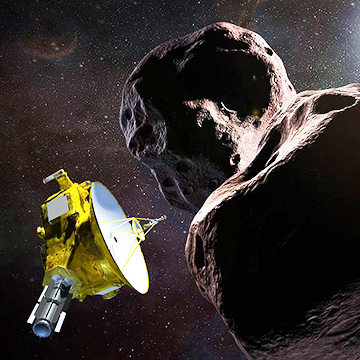
Teledyne e2v has provided NASA's New Horizons mission with two specialist image sensors.

Artistic rendition of NASA's New Horizon mission and the flyby of the Ultima Thule asteroid. Image is courtesy of NASA.

The American space agency’s New Horizons probe remains on course for its daring flyby of Ultima Thule between December 29, 2018, and January 4, 2019.
When the mission sweeps past the 30km wide object on New Year’s Day, it will be making the most distant ever visit to a Solar System body – at some 6.5 billion km from Earth.
Teledyne e2v has provided New Horizons with two specialist image sensors. The Long-Range Reconnaissance Imager (LORRI) is a black and white telescopic camera that has a 1k x 1k pixel image sensor at its core, CCD47-20. The other sensor, CCD96, powers Ralph – a 5k wide multi-color scanning imager.
New Horizons travels at 33,000 miles per hour, and the Kuiper Belt objects do not reflect a lot of light; therefore, the image sensors have been designed to be extremely sensitive and to work perfectly during its short flybys.

